
Where We Be
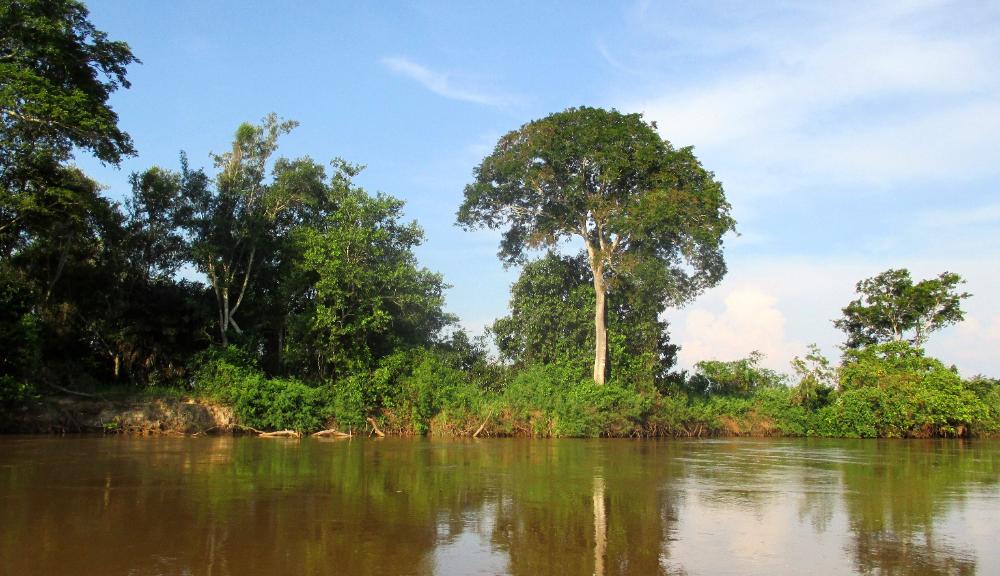
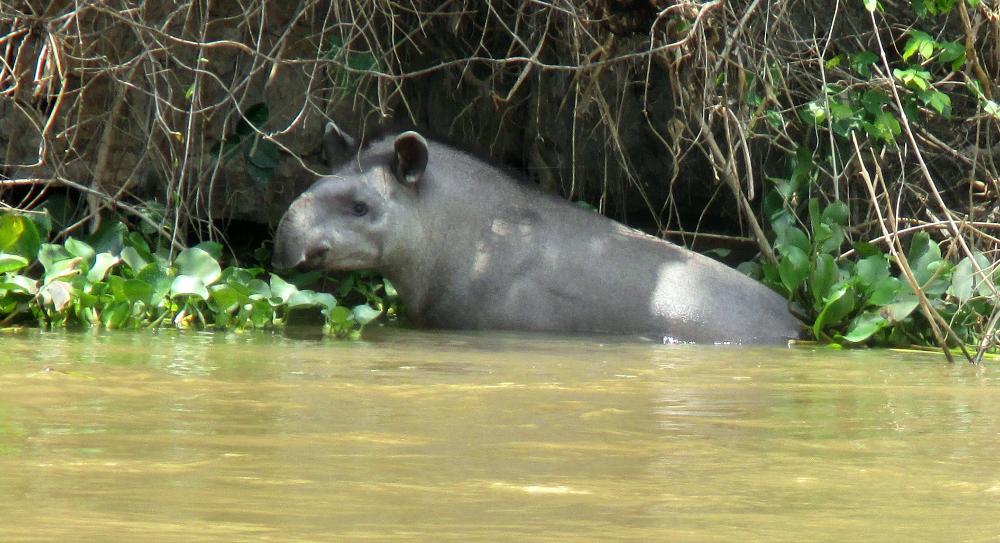
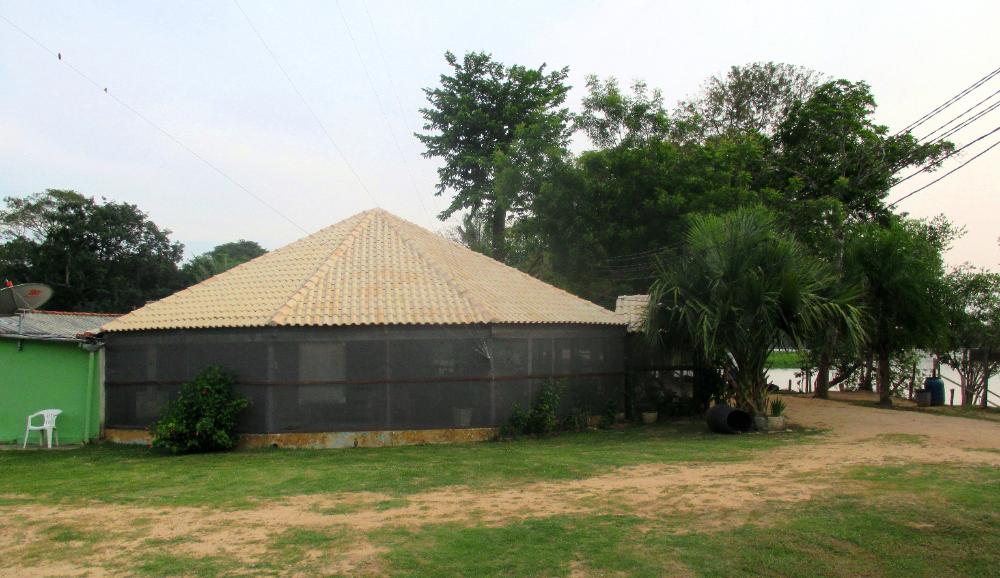
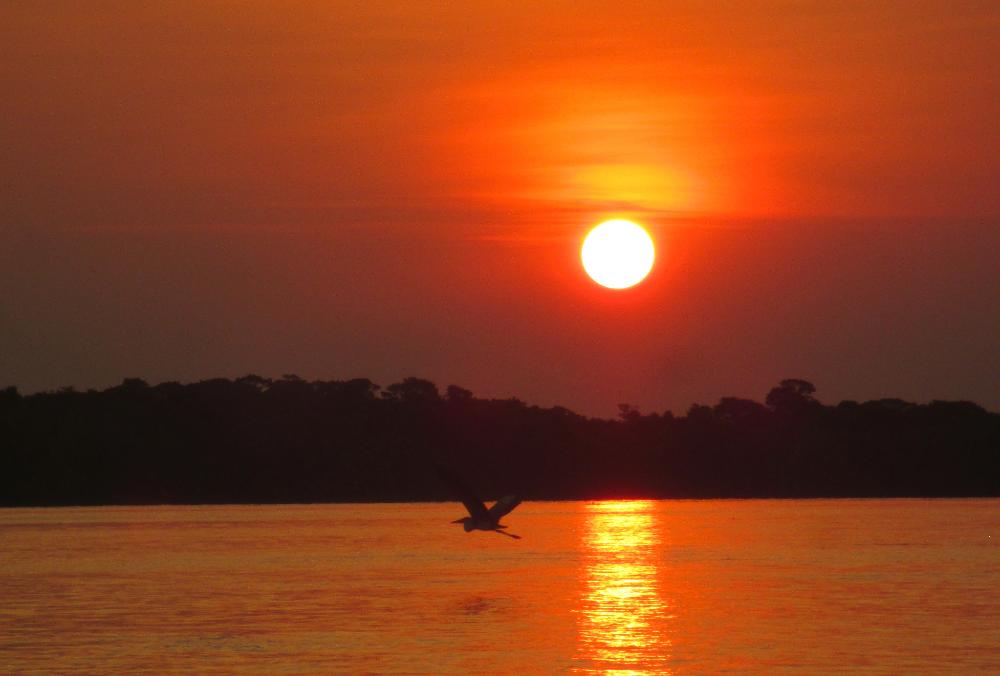
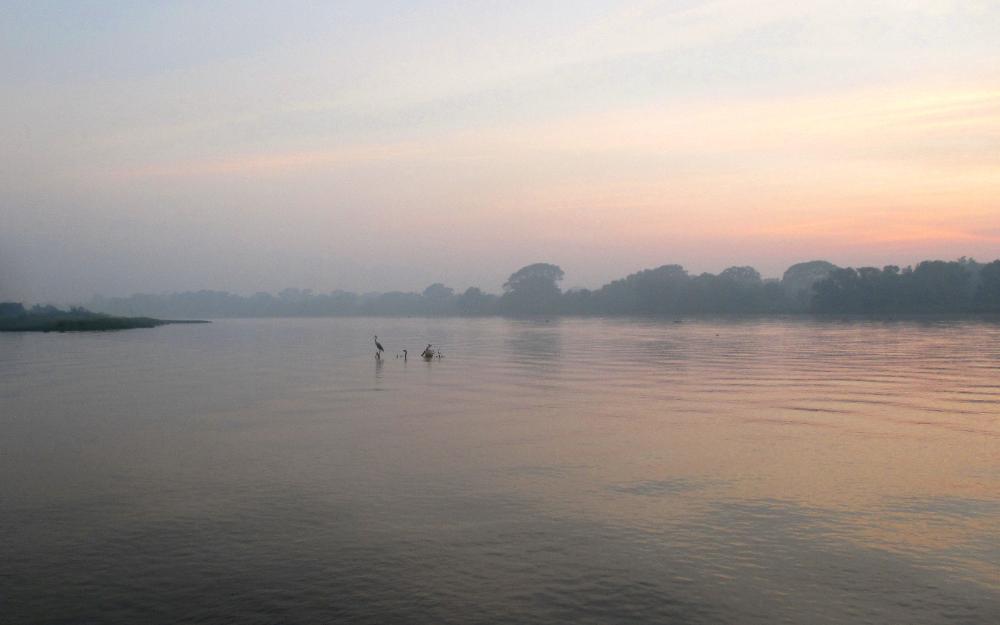
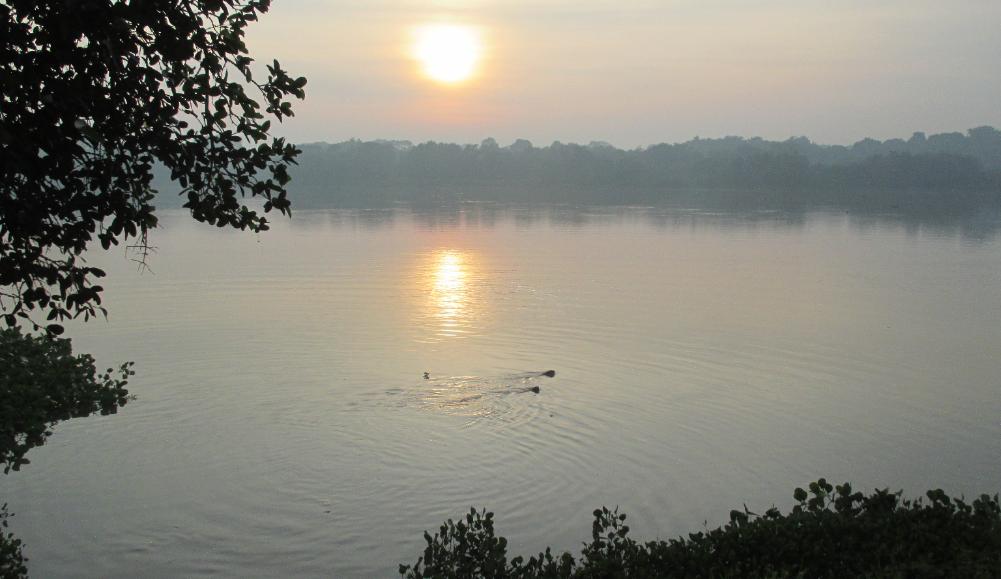
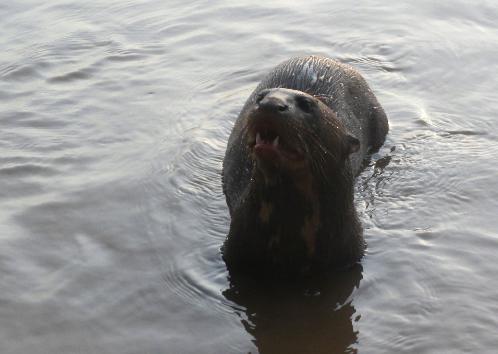
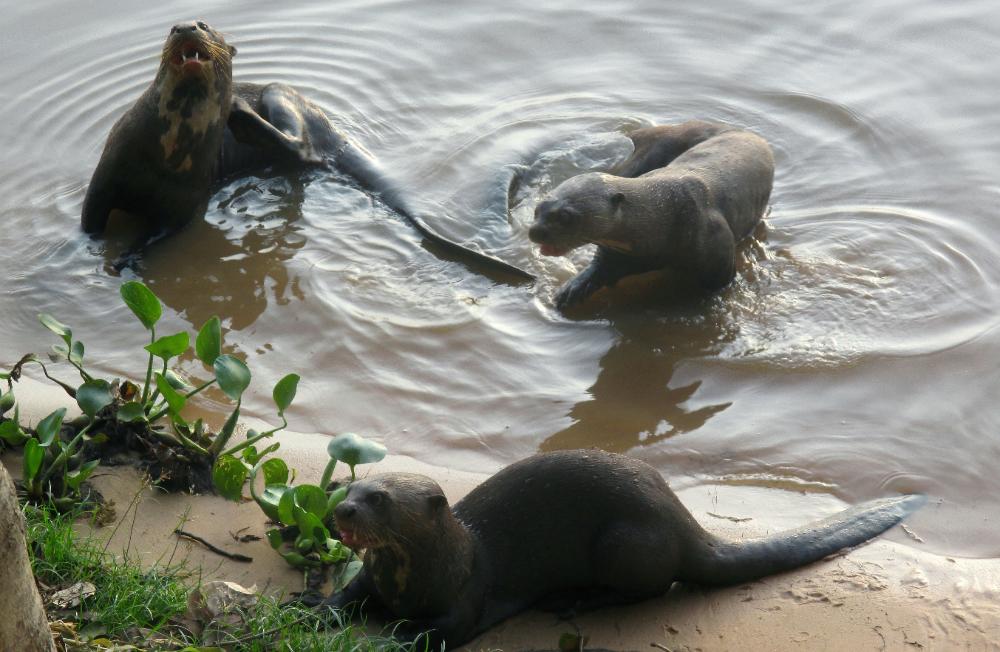
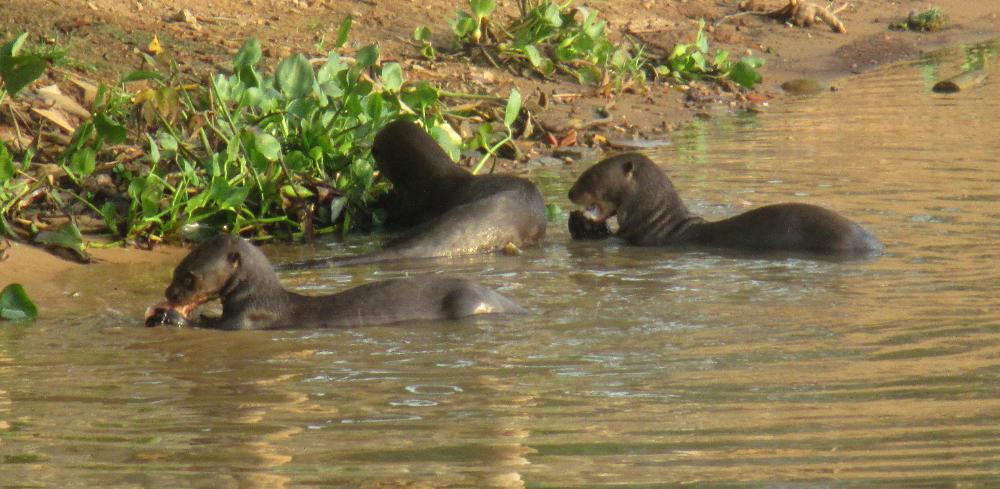
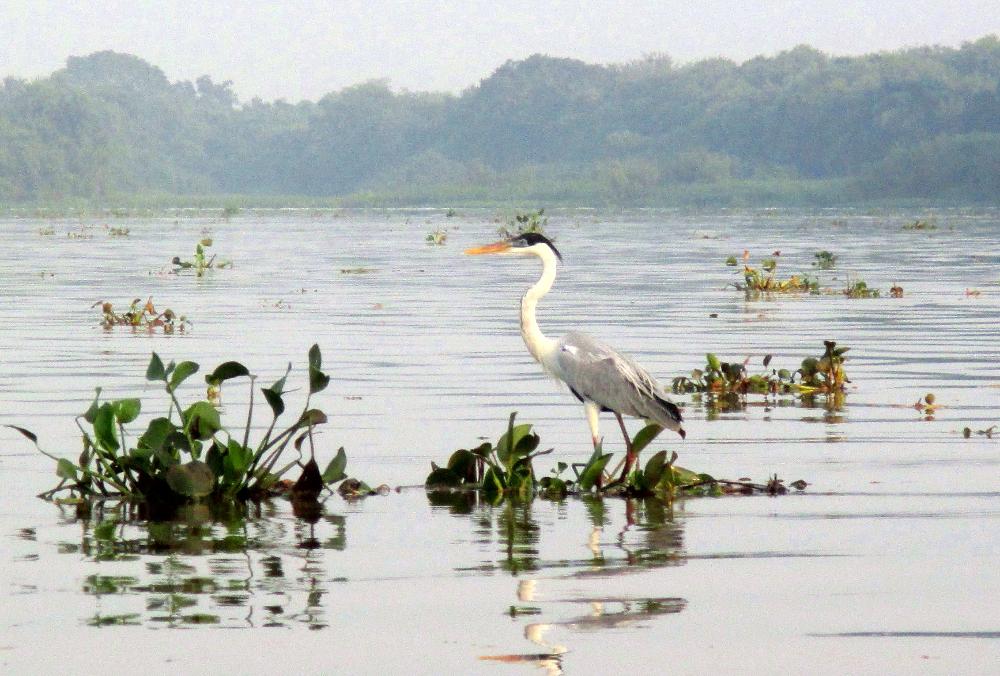
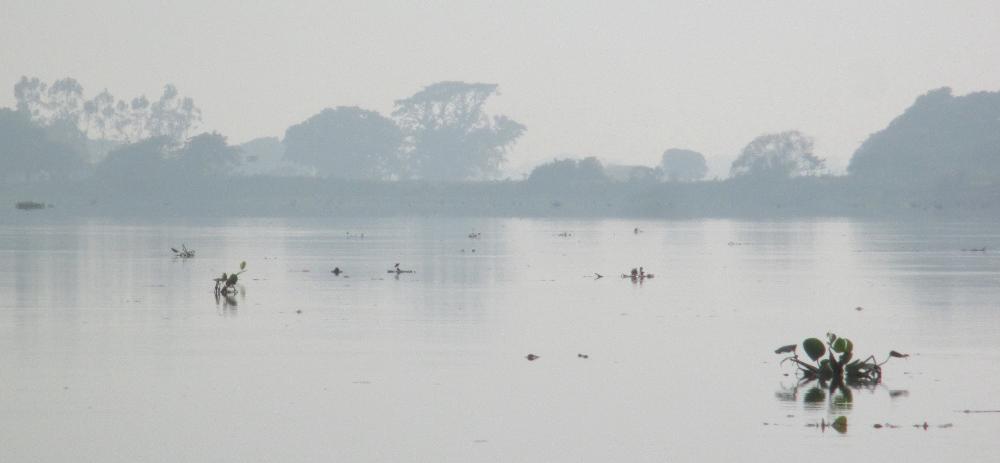
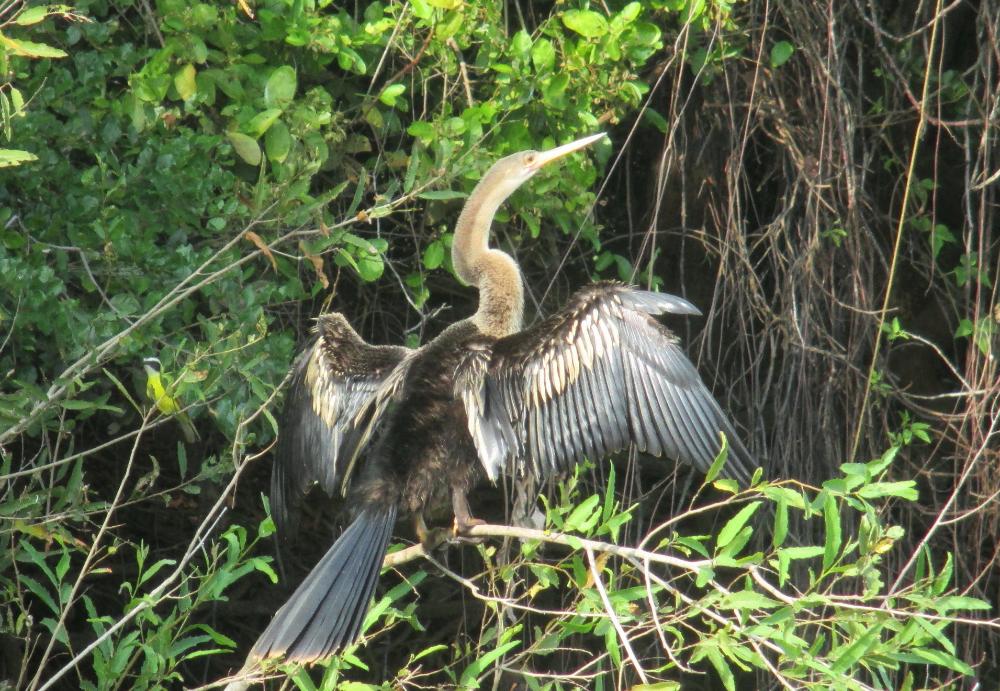
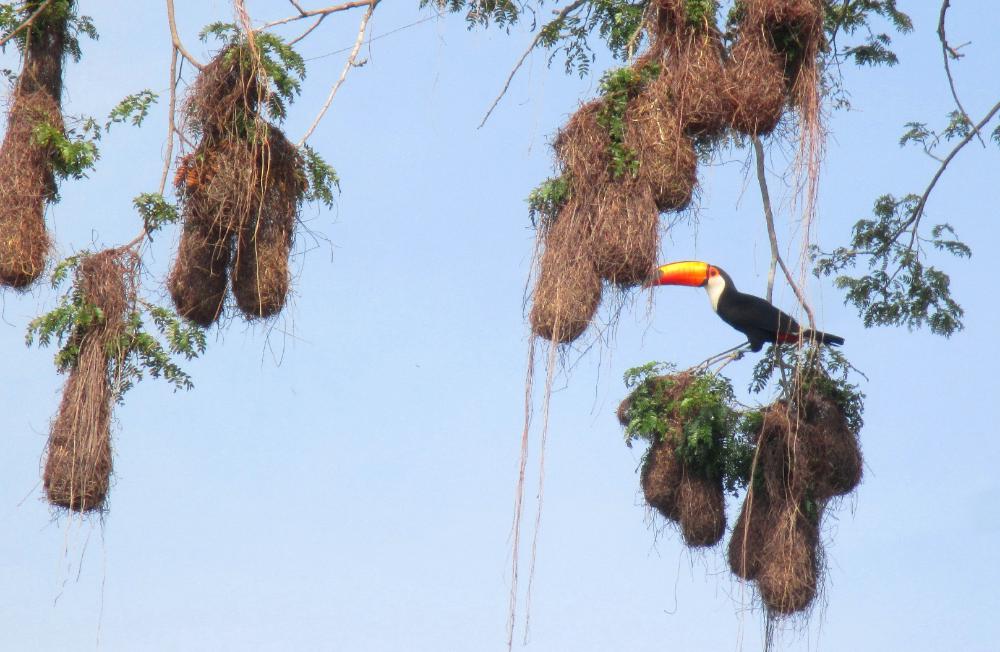
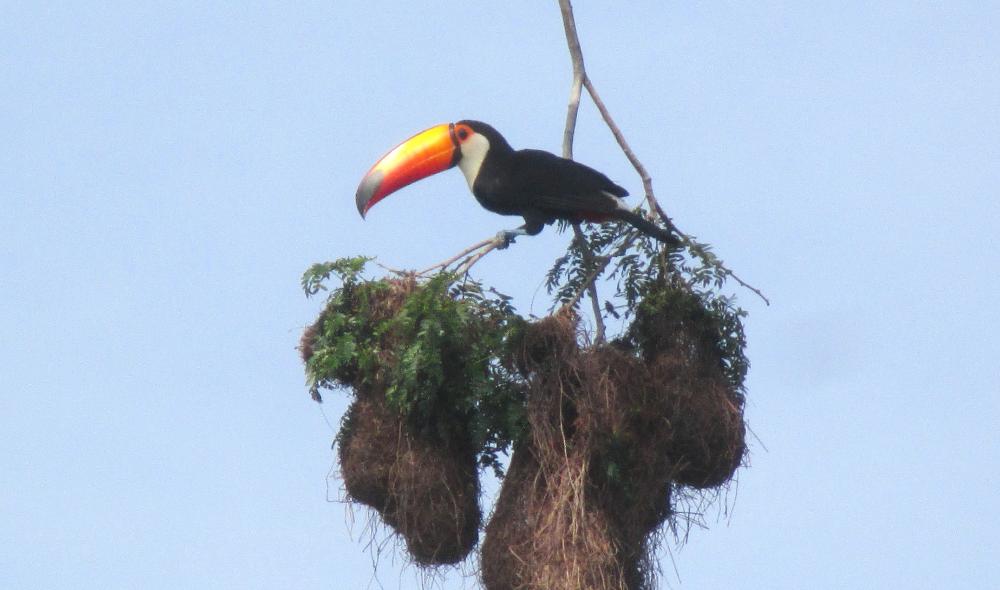
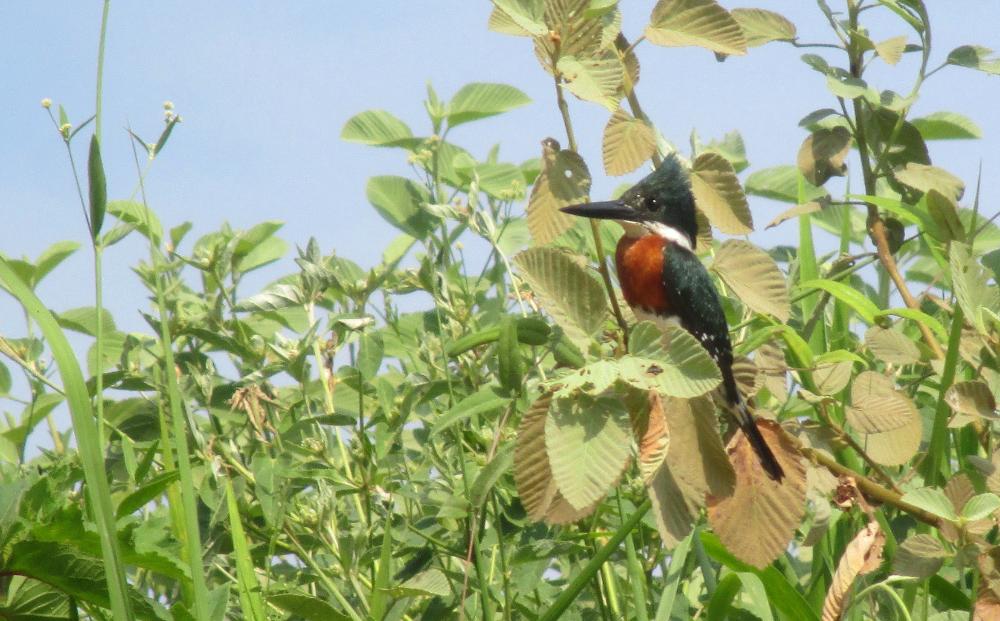
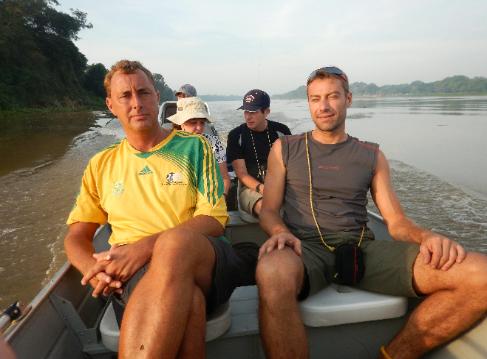
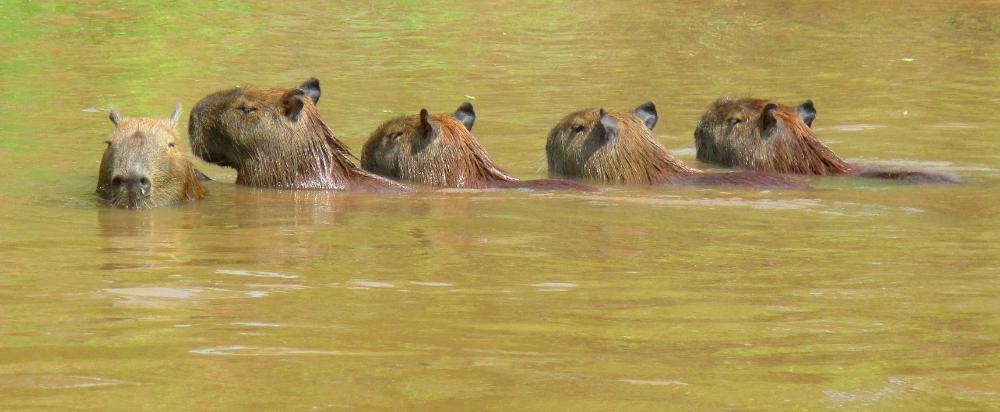
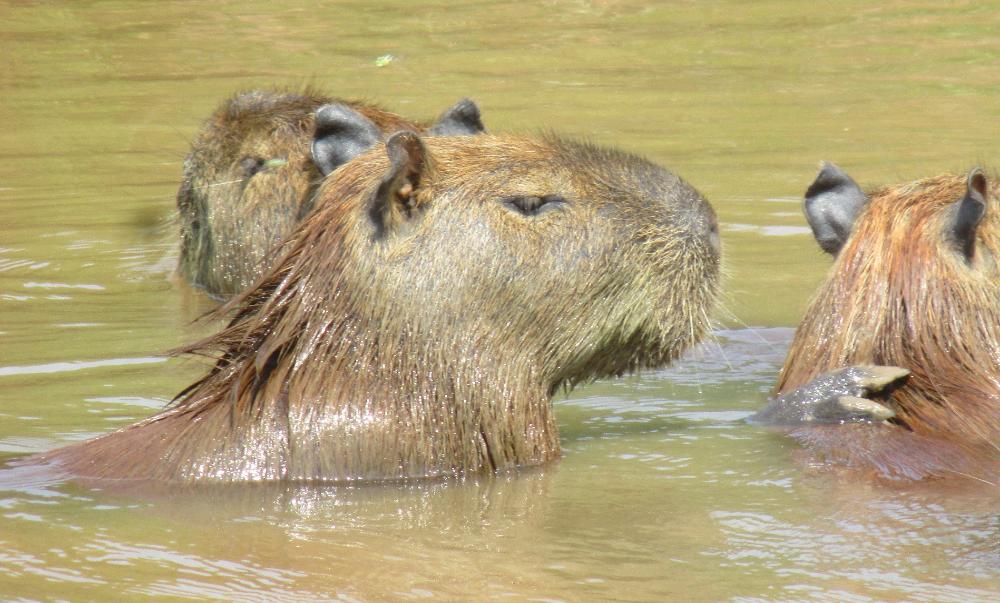
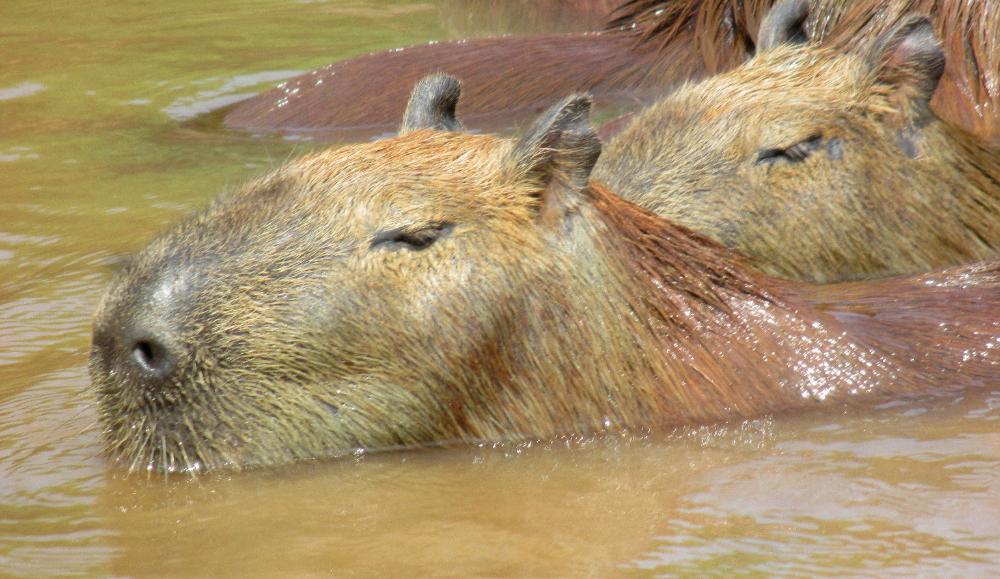
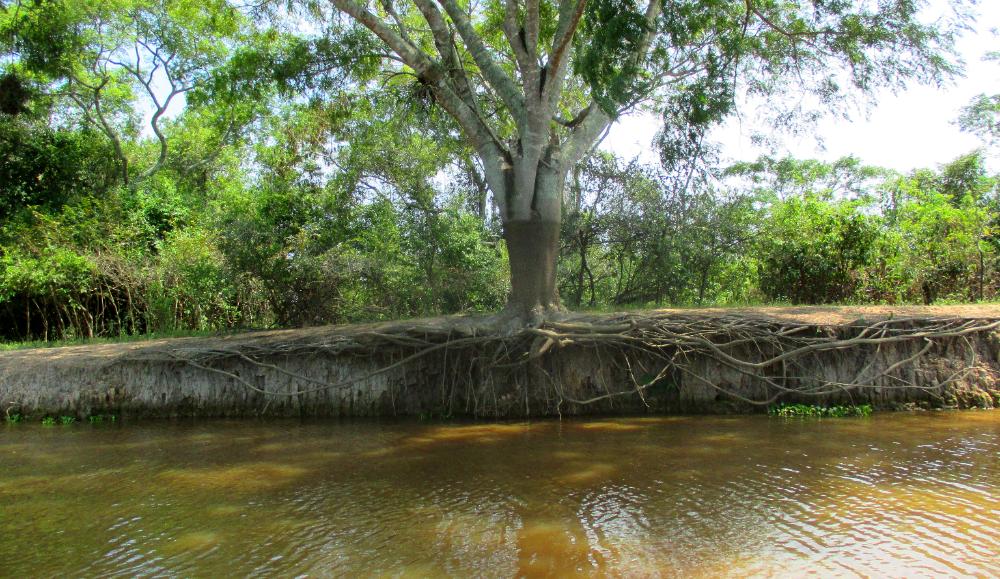
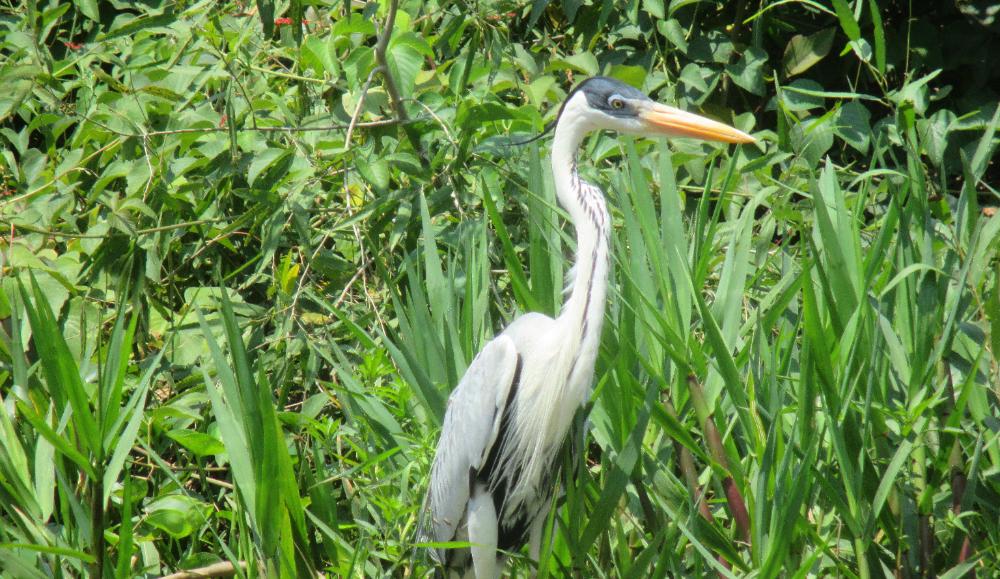
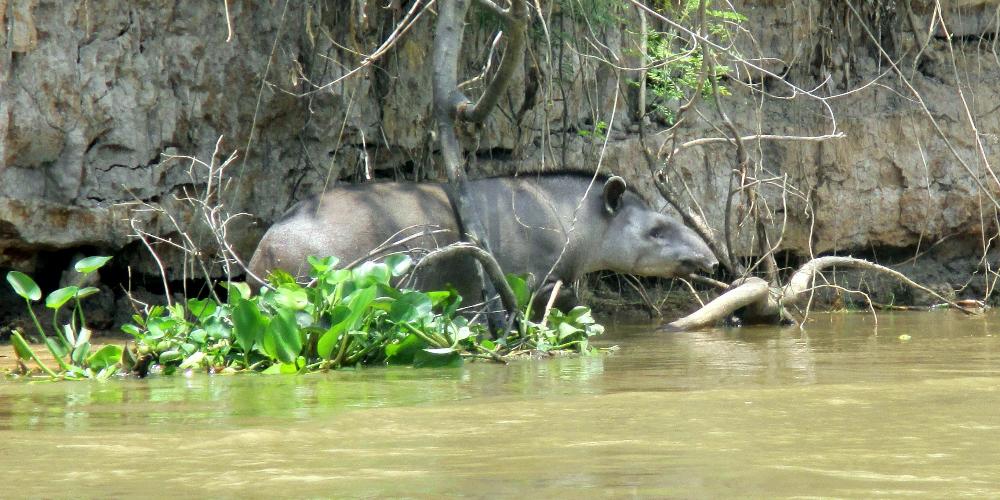
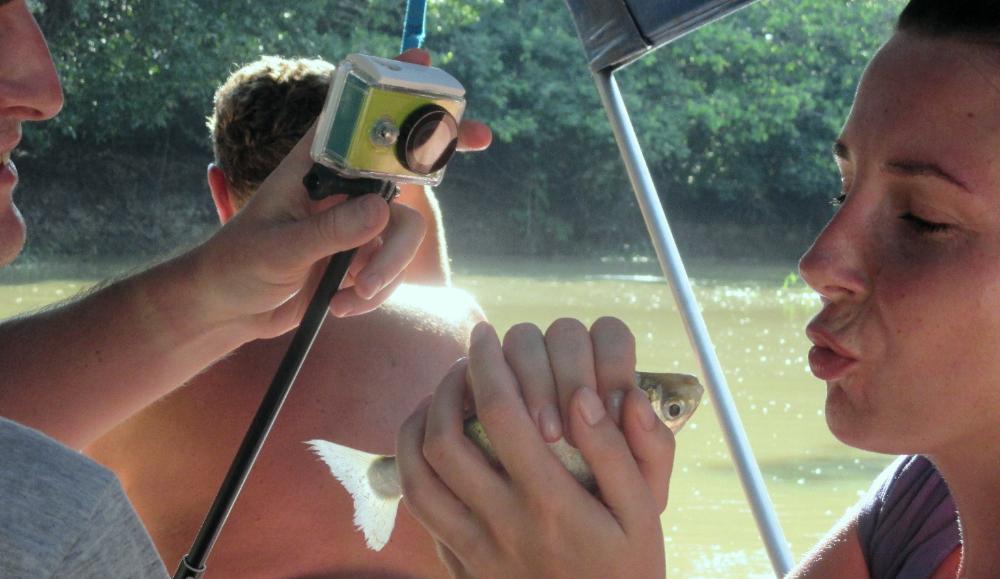
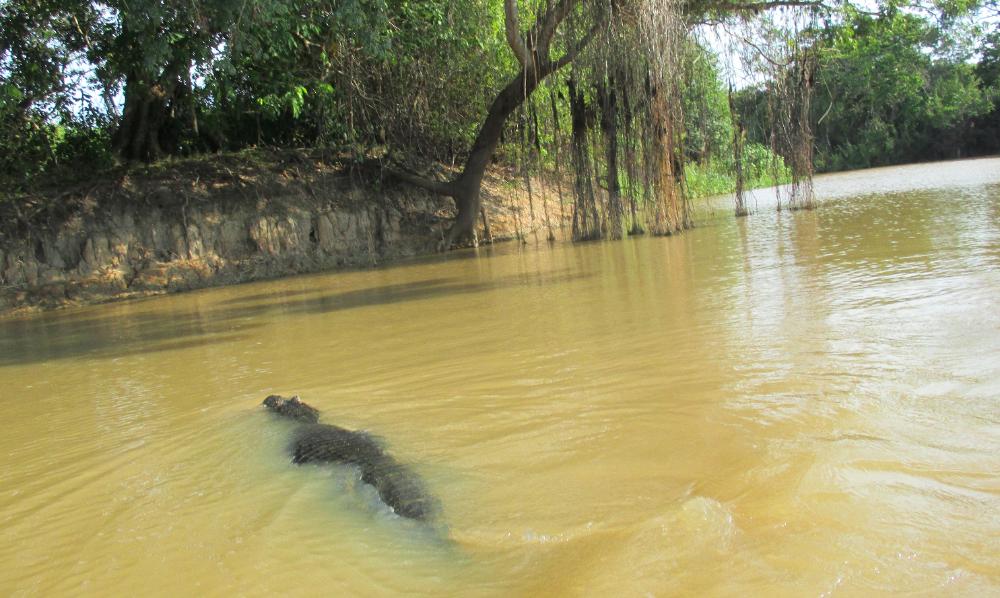
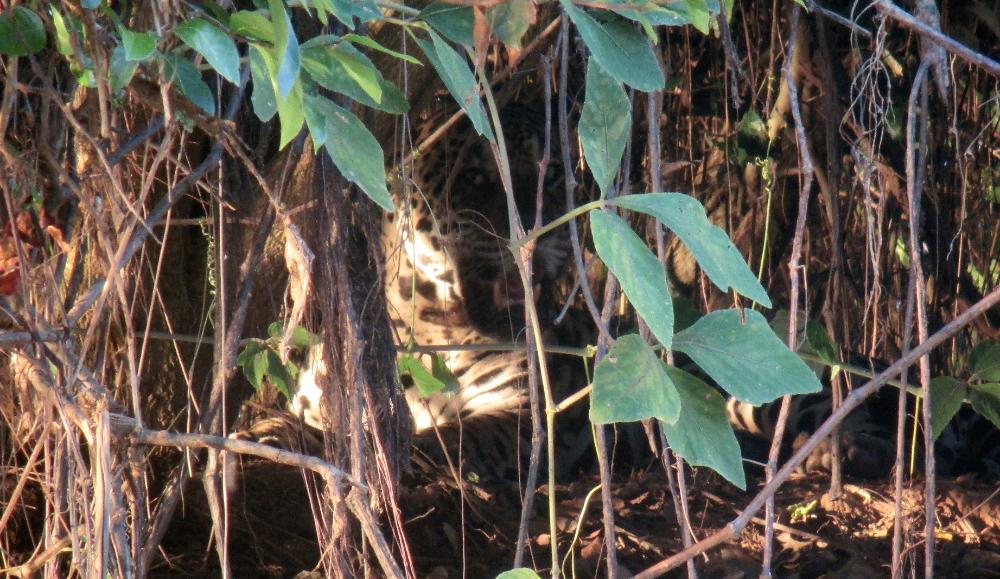
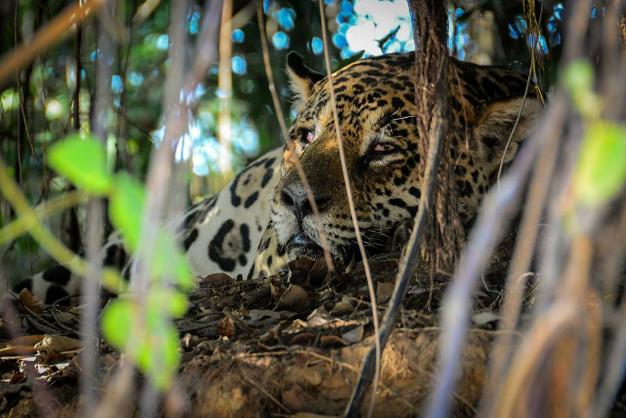
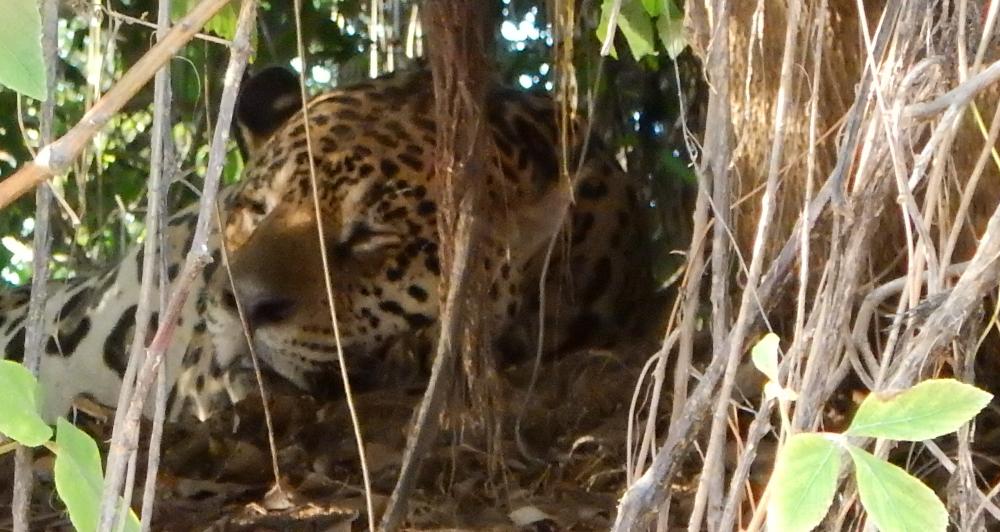
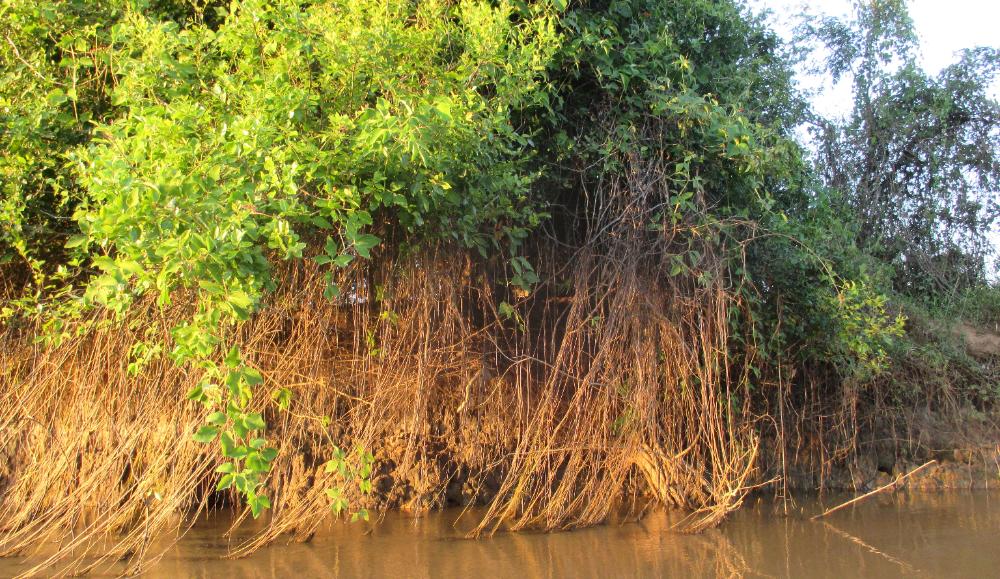
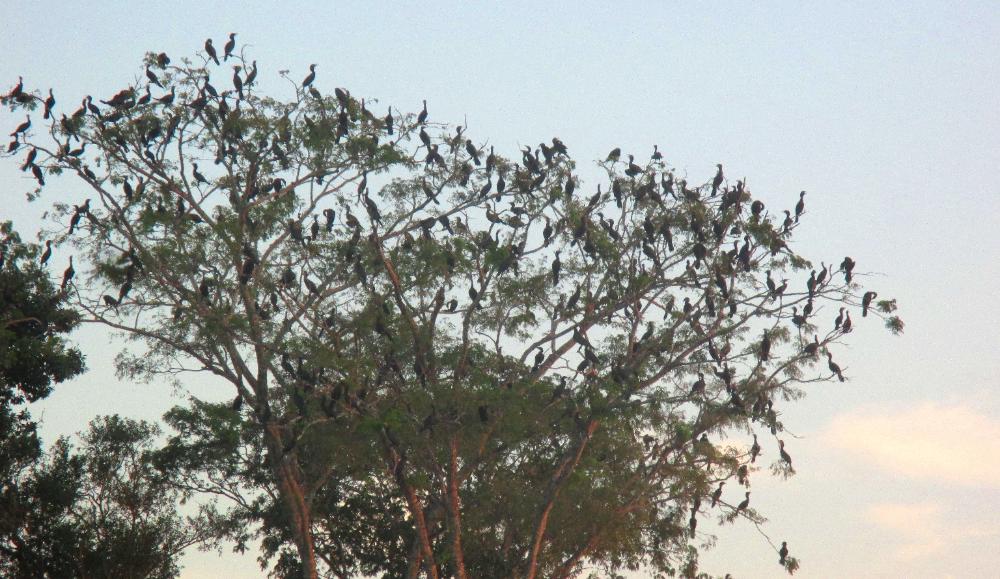
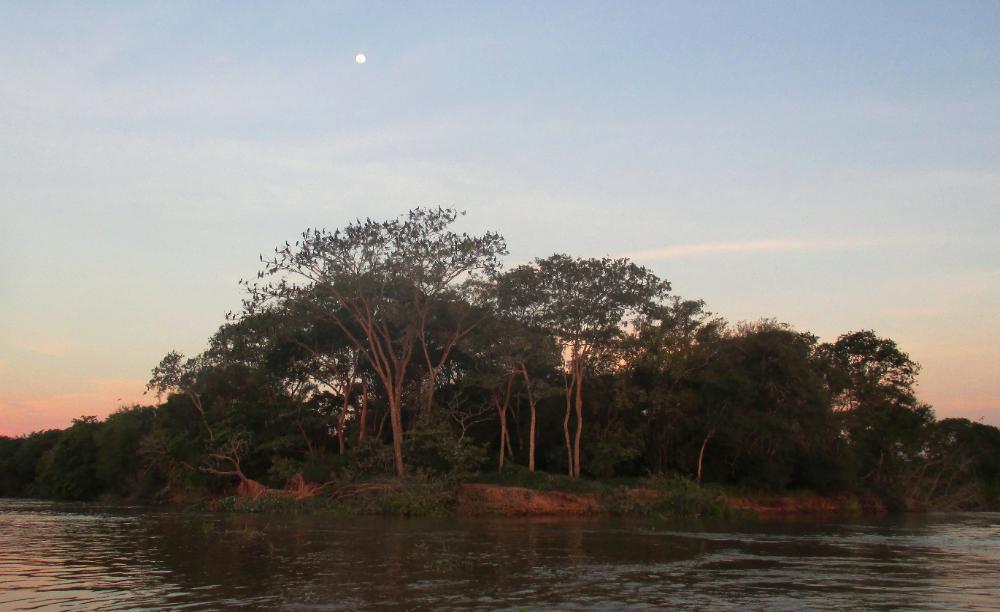
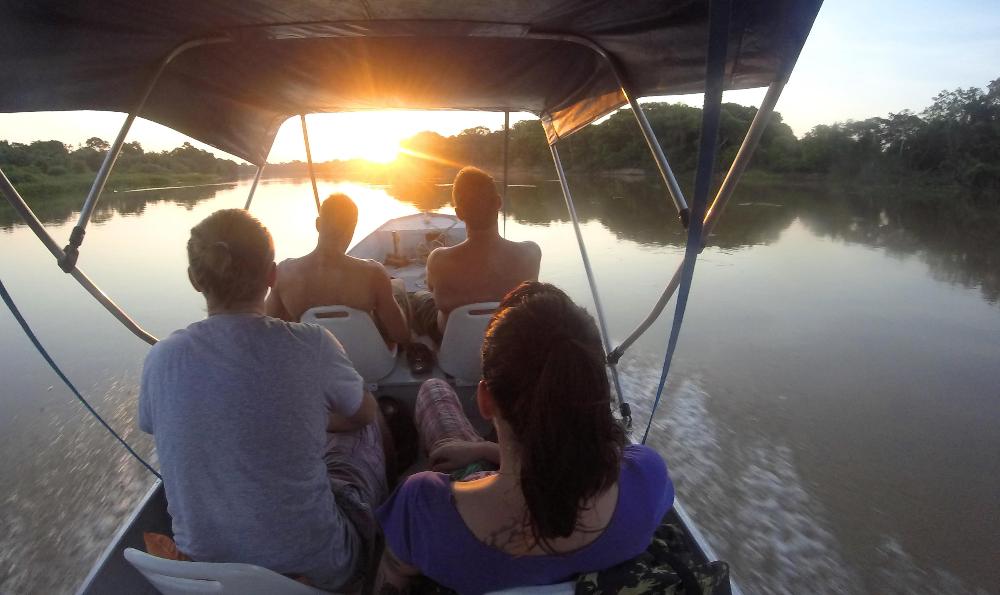
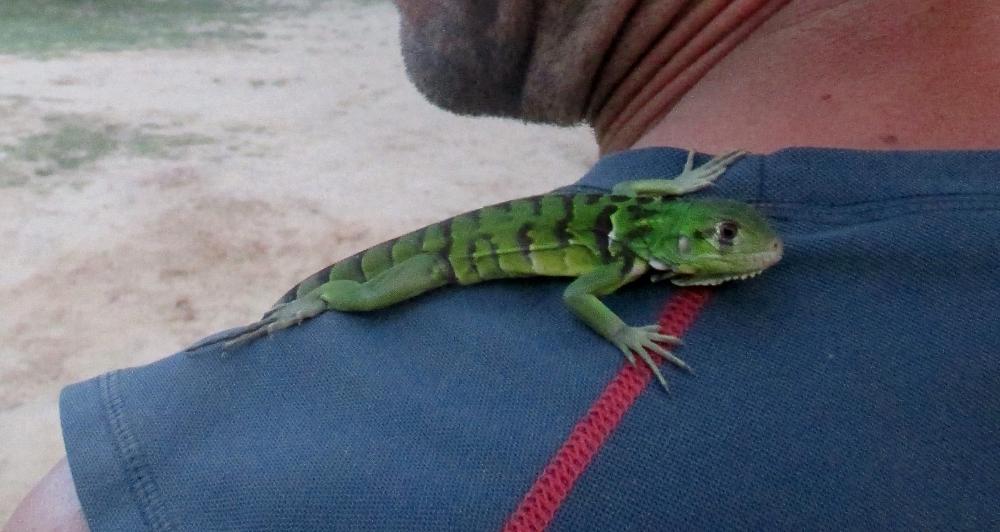
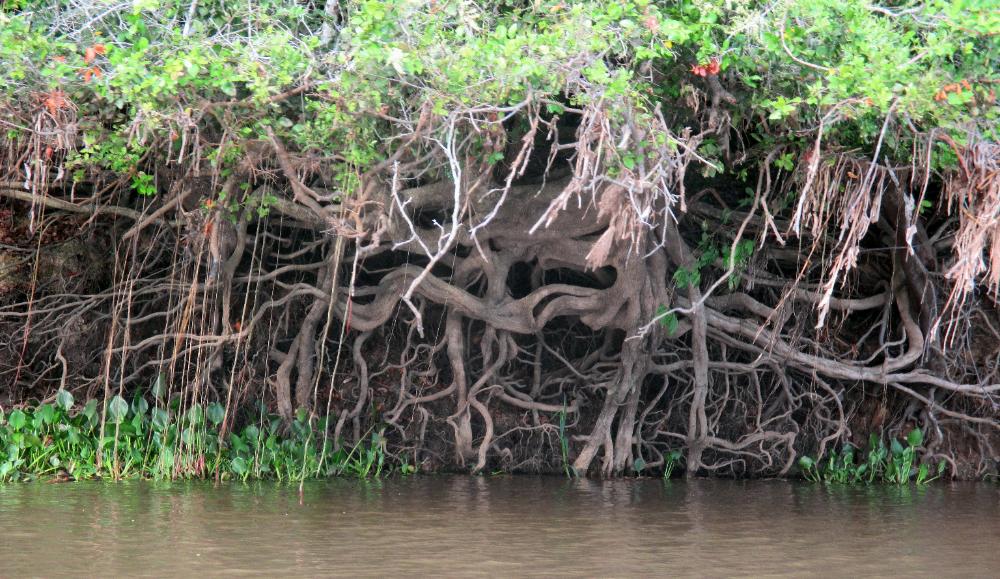
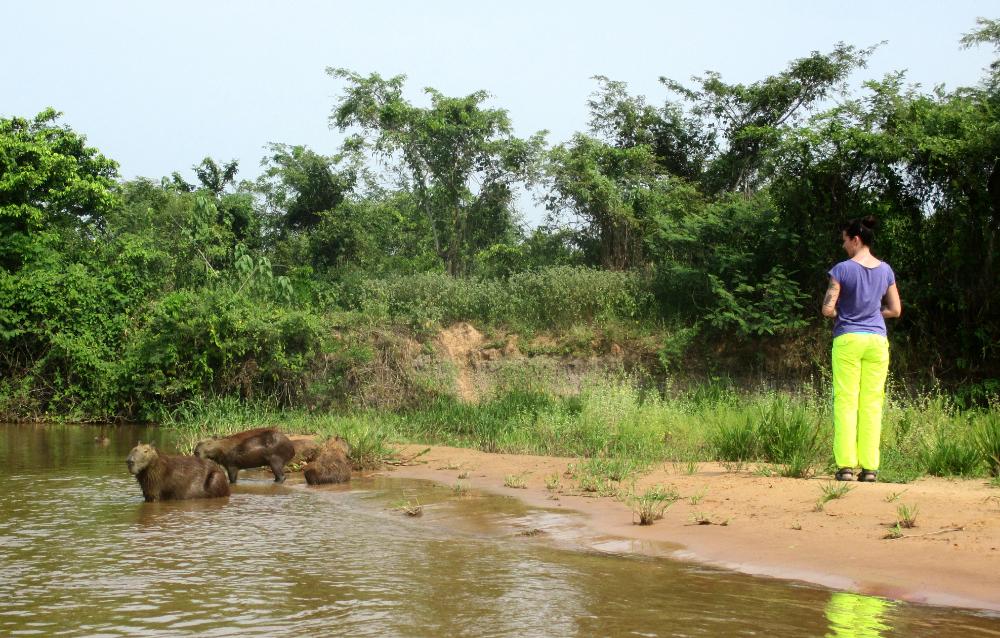
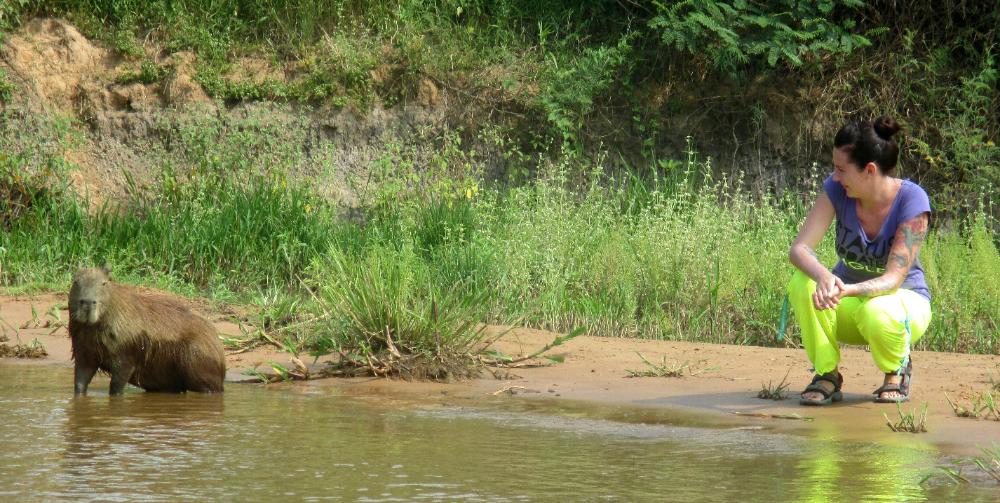
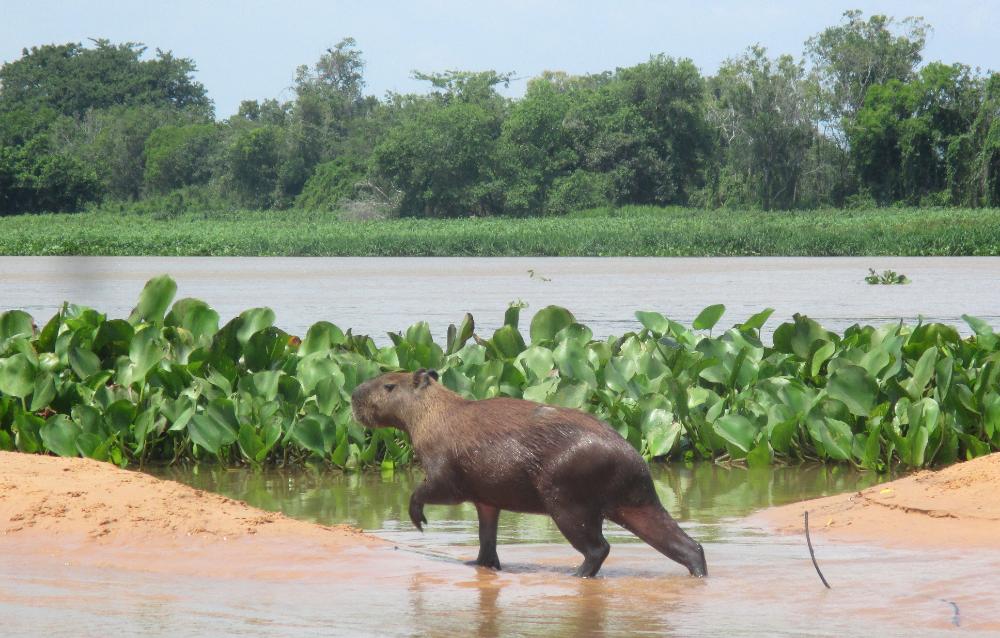
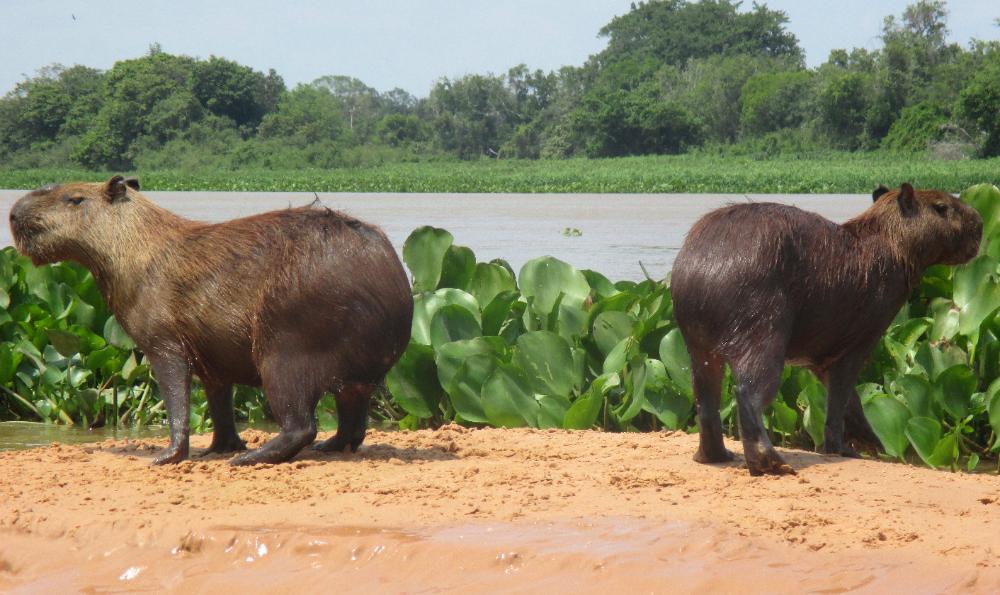
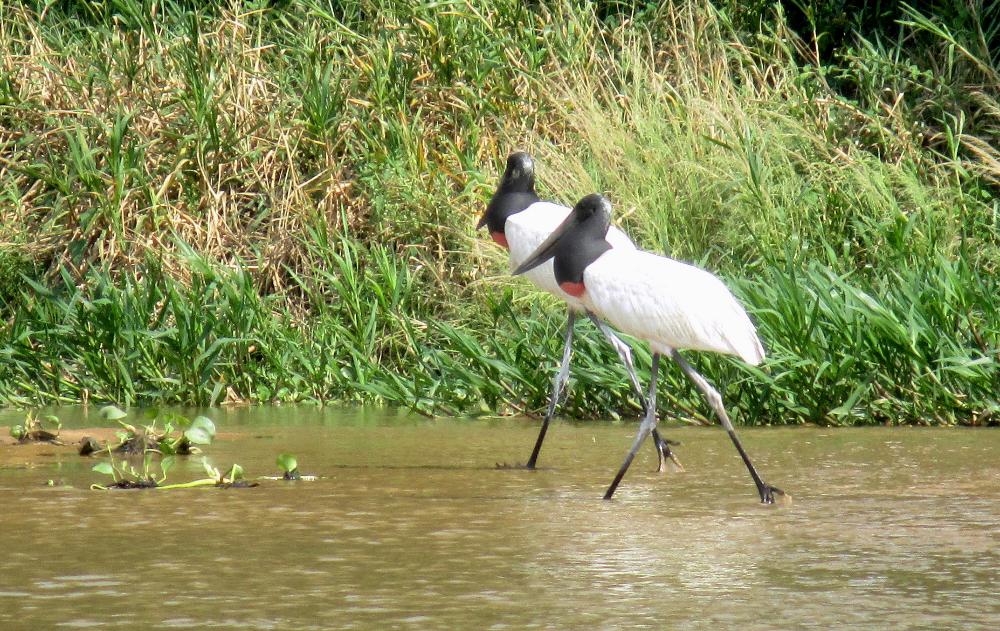
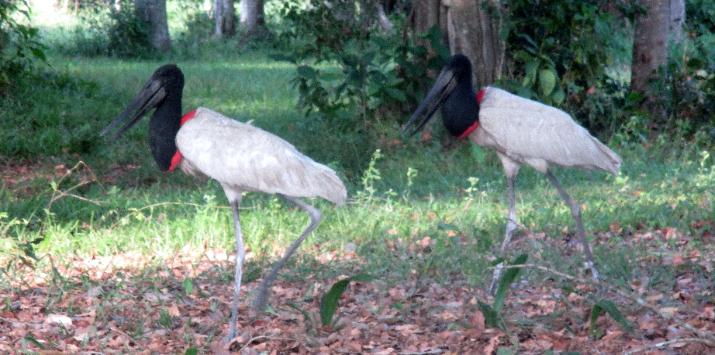
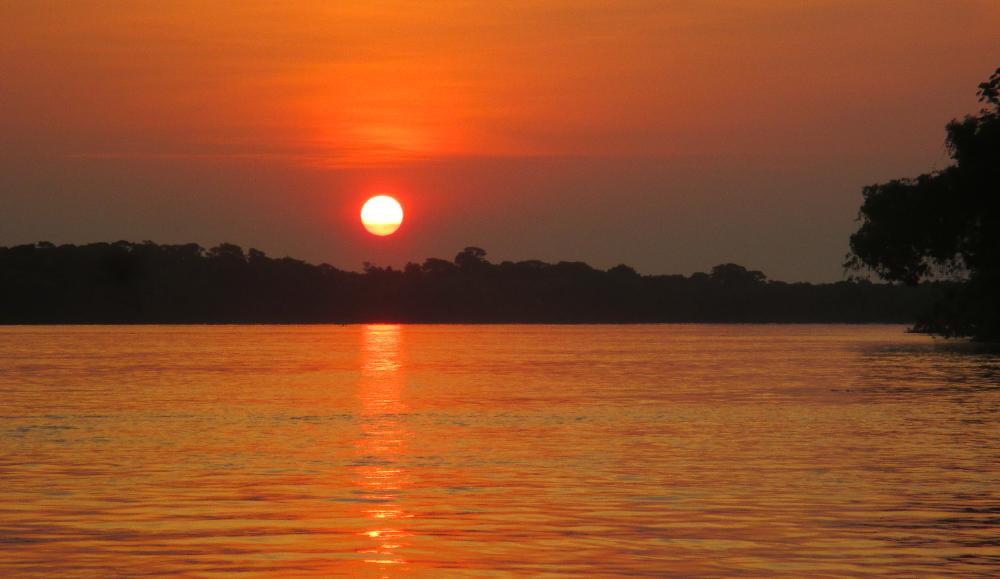
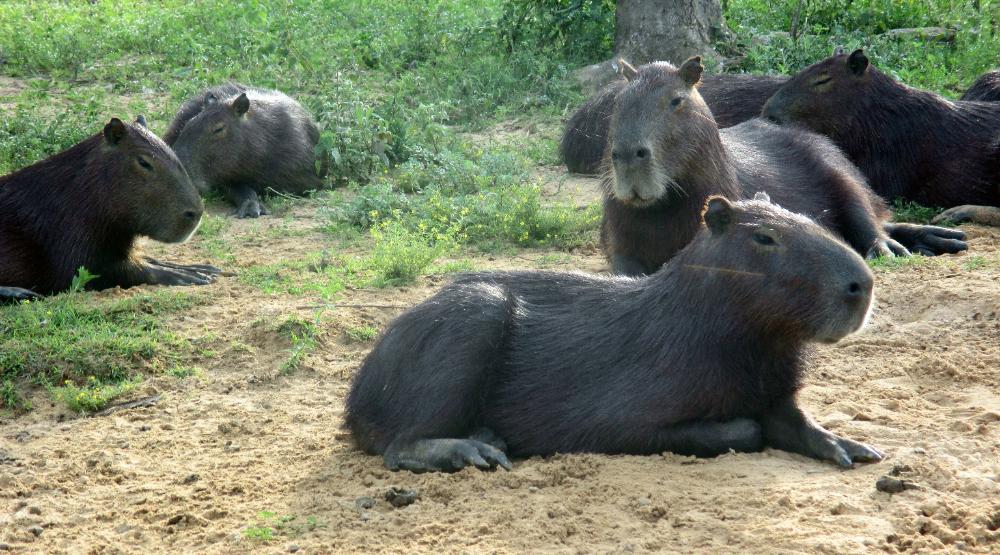
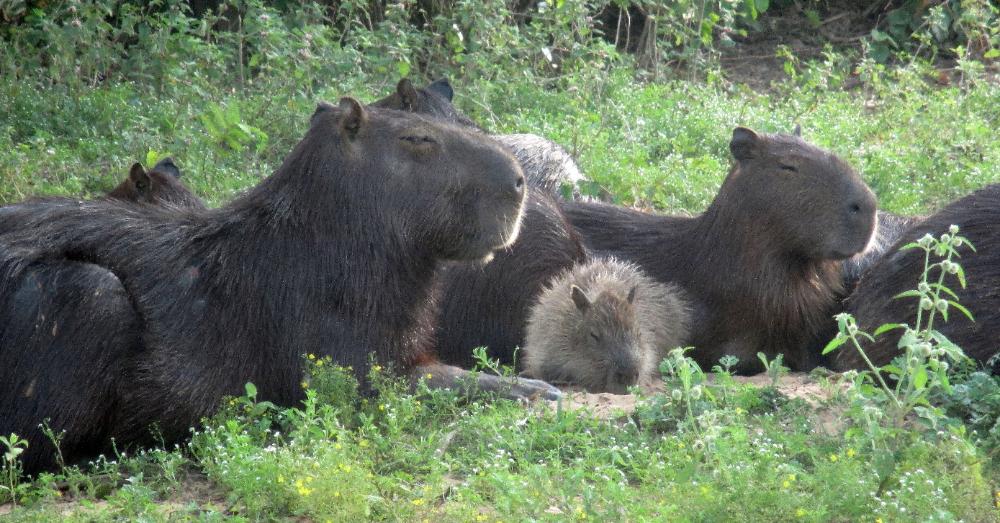
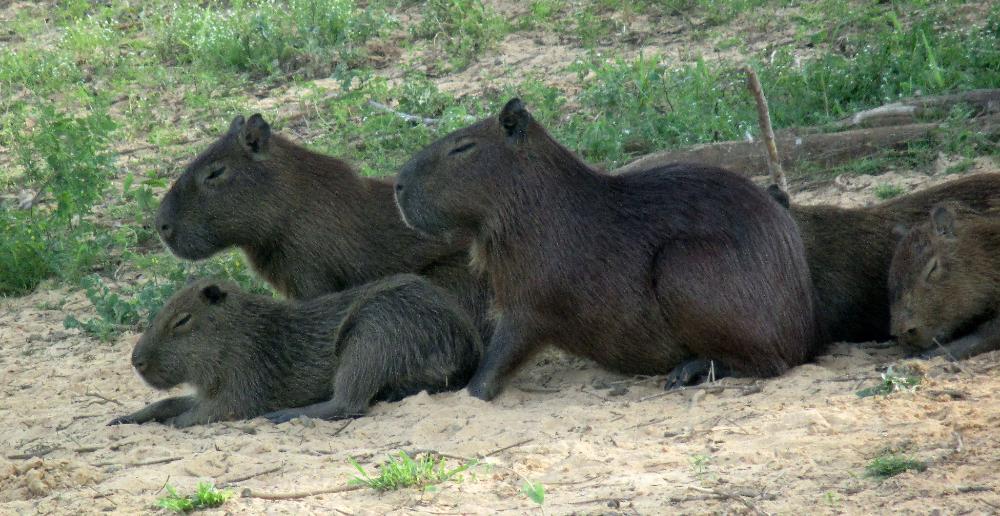
| We got to within ten feet of this magnificent jaguar! Credit for this photo goes to fellow traveler Marcin Sroka from Krakow, Poland. Nazdrovya! |
| The Pantanal, Brazil -- Porto Jofre |
Let's start with the jaguar, even though we
didn't see ours until the end of our second
safari day. Certainly that's why most folks come
to Porto Jofre, aka Jaguar Camp. Here is literally
your best chance in the world of spotting a
jaguar up close in the wild. While far from a
guarantee, there's a genuinely good chance of
seeing one if you visit between May and
November. In our case we saw just one jaguar
in three days of hard looking, but it made our
whole trip to the Pantanal feel complete.
Porto Jofre is where the road ends and there's
nothing between you and the Pantanal wilder-
ness but water. It's a wetlands paradise, and the
only good way to explore it is by boat. So that's
what you do: each day you get into a motor boat
and go on safari, typically twice per day, once in
the morning and again in the afternoon. You
never know what you might see -- or not see --
and that's half the fun. Of course JAGUAR in
capital letters is on everyone's mind, but we
were also lucky enough to see tapirs, toucans,
monkeys, river otters, capybara, caiman, lizards,
jumping fish, and birds beyond all counting.
didn't see ours until the end of our second
safari day. Certainly that's why most folks come
to Porto Jofre, aka Jaguar Camp. Here is literally
your best chance in the world of spotting a
jaguar up close in the wild. While far from a
guarantee, there's a genuinely good chance of
seeing one if you visit between May and
November. In our case we saw just one jaguar
in three days of hard looking, but it made our
whole trip to the Pantanal feel complete.
Porto Jofre is where the road ends and there's
nothing between you and the Pantanal wilder-
ness but water. It's a wetlands paradise, and the
only good way to explore it is by boat. So that's
what you do: each day you get into a motor boat
and go on safari, typically twice per day, once in
the morning and again in the afternoon. You
never know what you might see -- or not see --
and that's half the fun. Of course JAGUAR in
capital letters is on everyone's mind, but we
were also lucky enough to see tapirs, toucans,
monkeys, river otters, capybara, caiman, lizards,
jumping fish, and birds beyond all counting.
| Morning dawns misty but glorious |
| But hey, at least it's cool at sunrise, and animals like these giant river otters are at their most active |
| Active at begging for fish, that is! |
| I doubt we'll ever see giant river otters any closer than this |
| For them this must be the equivalent of a McDonald's Happy Meal |
| Around every bend, literally, are grey and cocoi herons |
| The Pantanal looks as sleepy as we feel! |
| And this is the anhinga, also known as a snake bird. When swimming, only its neck appears above the water, so it looks like a snake ready to strike. |
| This toucan is hunting for eggs among the weaver nests of the yellow-rumped cacique |
| The much smaller caciques squawked their displeasure at the toucan's presence and dive-bombed him to drive him away |
| This "raft" of capybara look utterly content in the water |
| You can see this one's slightly webbed toes as he tries to get the attention of his mate -- "Hey, they're looking at us again" |
| They're a favorite food for both jaguar and caiman, but they seem awfully relaxed about it, don't they? |
| The dark section of this trunk shows just how high the water can get in the Pantanal during the rainy season |
| If you like peace and quiet, serenity and birdsong, the Pantanal is the place for you |
| If you like birds, you'll be in heaven -- although a few in our group got "birded out" with all the constant sightings |
| We also got a terrifically good sighting of this tapir, which our guide told us can be even harder to spot than a jaguar |
| Unfortunately for him, the high bank kept going and going, so we got a good long look at him both swimming and standing before he finally found a way out |
| Not to be outdone, Joanna makes friends with a fish |
| During one of our passes we saw this caiman swimming, a common sight in the Pantanal |
| This is the best photo I could manage with my Canon PowerShot. You can see just how well-hidden the jaguar was -- and how he was looking right at us! |
| Our boat made multiple passes within a few feet of the jaguar's lair; sometimes he was sleeping, other times awake. This photo is courtesy of Marcin Sroka. |
| You'd never know a jaguar was hiding just behind that curtain of vines |
| Just one tree can support a lot of roosting birds |
| As the sun sets, the moon appears and the birds go to roost |
| Pantanal sunsets are magical |
| Sergi makes friends with a lizard |
| We loved the intricate root systems of the exposed tree trunks |
| Joanna climbed out of the boat onto a sandy beach and experimented with how close she could get to the capybara |
| Pretty close! |
| They can submerge for up to five minutes to avoid predators and can supposedly run as fast as a horse on land -- although they seemed pretty lazy when we saw them |
| Capybara bookends |
| The jabiru is the bird symbol of the Pantanal and is the tallest flying bird in South America |
| You'll never see more of these distinctive-looking storks than you will here in the Pantanal |
| Heading home at the end of a satisfying safari day |
| Time for one last sunset before heading home |
| They're highly social and can be found in groups of fifty or more |
| We were lucky enough to see a few babies among the herd |
| We love this portrait of a capybara family resting near the river bank |
| Back at the dining hall at Camp Jofre. Make no mistake, this is simple living, but the food is good, the AC in our rooms is cold, and there's plenty of Skol and Bohemia beer to drink. |
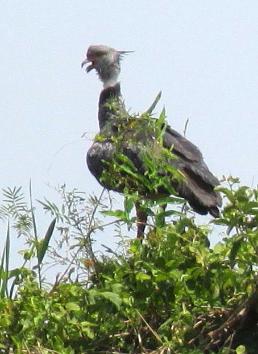
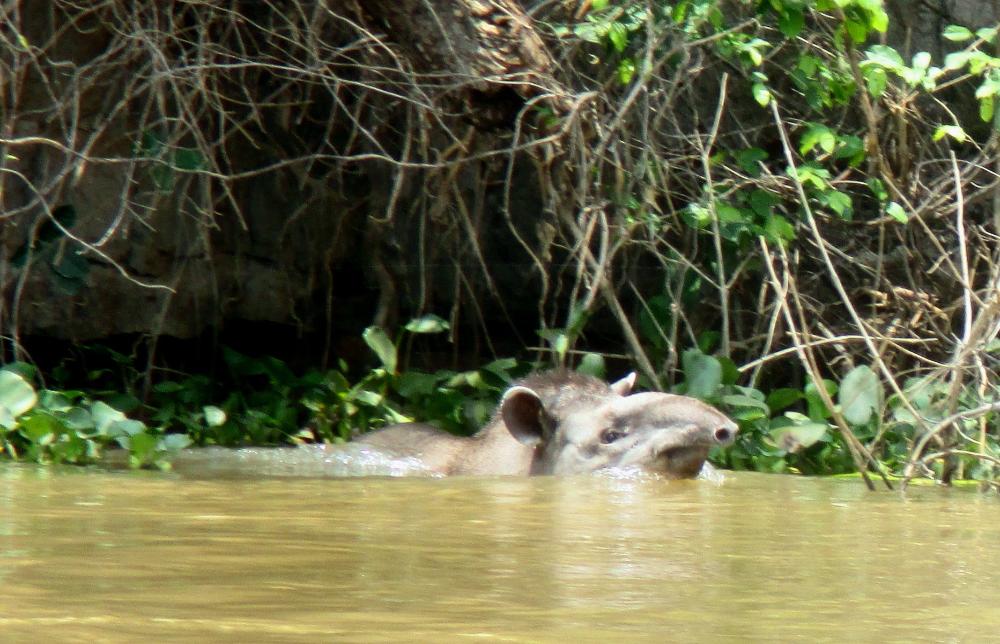
| When he first spied us, he crashed down the bank into the water and started swimming |
| Speaking of distinctive-looking, this odd bird is a southern screamer |
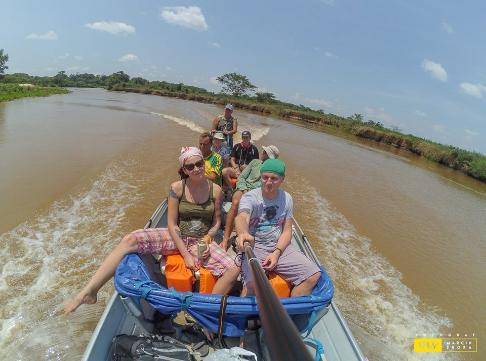
| There are worse ways to spend a day! Exploring the Pantanal with Eric from the Netherlands, Sergi from Spain, and Marcin & Joanna from Poland. Photos courtesy of Marcin Sroka. |
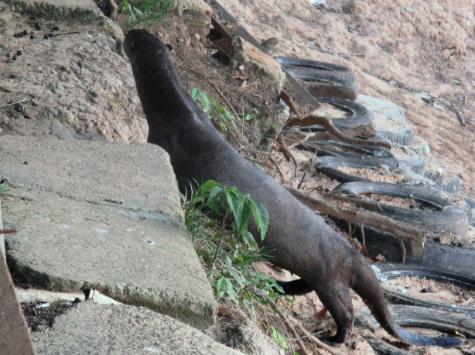
| Look how sleek they are! |
| The kingfishers are among our favorites. You'll see ringed, Amazon, and green kingfishers aplenty here. |